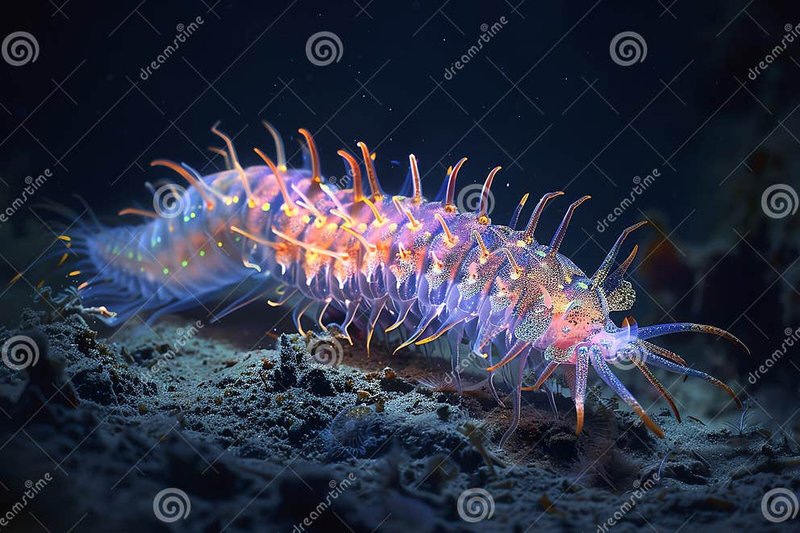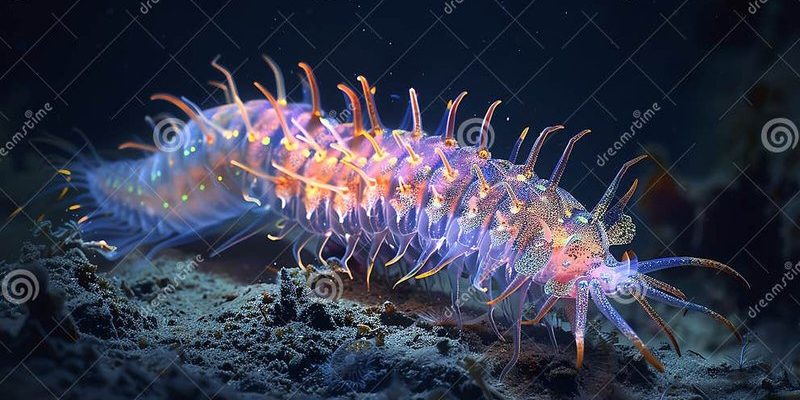
Bioluminescence in bristle worms isn’t just eye-candy; it’s a survival strategy honed over millions of years in deep-sea environments. These unique creatures add to the mystique of our world’s oceans and remind us just how complex and beautiful marine life can be. Let’s dive into this glowing phenomenon, exploring the different bioluminescent bristle worm species, how they create light, and their roles in the ecosystem.
What are Bristle Worms?
Bristle worms, also known as polychaetes, belong to a group of segmented worms found in various aquatic environments. You can think of them as the backbone of many marine ecosystems. They have bristles or setae—these tiny, hair-like structures help them move and grab onto surfaces. While some bristle worms live in shallow waters, others thrive in the deep sea, often in the dark, mysterious depths.
Most bristle worms are harmless and play a vital role in the food web. They break down organic matter, which supports a healthy marine environment. But what makes some of them truly stunning is their ability to produce light. Imagine floating along in the pitch-black ocean and suddenly seeing a flicker of bioluminescence; it’s like nature’s own fireworks show.
How Do Bioluminescent Bristle Worms Glow?
You might be wondering, how exactly do these worms create light? The magic lies in a chemical reaction that happens inside their bodies. Bioluminescent organisms possess a compound called luciferin and an enzyme called luciferase. When these two components combine, they produce light. It’s similar to how fireflies light up on a summer night—just much more subtle and often in shades of blue or green.
Interestingly, not all bristle worms glow, and the reasons for bioluminescence can vary. Some species use light to attract mates, while others may flash to confuse predators or lure prey. This glowing behavior is crucial for survival in the deep sea, where visibility is minimal.
Famous Bioluminescent Bristle Worm Species
Several species of bristle worms showcase stunning bioluminescence. Here are just a few of the most notable:
- Odontosyllis: These worms are known for their vibrant blue-green light, which they use during mating rituals. Imagine being underwater and witnessing a beautiful light display as they pair off!
- Tomopteris: Often referred to as the “transparent bristle worm,” Tomopteris produces an ethereal glow. They are agile swimmers and can create mesmerizing light patterns, which might help them evade predators.
- Palola: Found in tropical and subtropical waters, Palola worms can produce stunning light displays. They use bioluminescence not just to attract mates but to mark their territory.
Each of these species offers a different glimpse into the world of bioluminescence. Observing these creatures in their natural habitat can be an unforgettable experience, making the ocean even more enchanting.
The Role of Bioluminescent Bristle Worms in the Ecosystem
Bioluminescent bristle worms play crucial roles in their environments. They contribute to nutrient cycling by breaking down organic matter, which benefits many other marine species. Think of them as nature’s recyclers, taking waste and converting it into energy that supports the food chain.
Furthermore, their ability to produce light can impact predator-prey dynamics. For instance, a glowing worm might attract fish or other carnivores, which can lead to an influx of food for surrounding organisms. This behavior showcases the interconnectedness of life beneath the waves.
Understanding these roles helps researchers grasp the complexities of marine ecosystems. It reminds us that even the tiniest organisms can have a significant impact on broader environmental health.
Where to Observe Bioluminescent Bristle Worms
If you’re keen to witness these glowing wonders for yourself, there are a few places where bioluminescent bristle worms can be found. Areas with rich marine biodiversity, like coral reefs and deep-sea environments, are prime spots. Some popular locations include:
- Pacific Ocean off the coast of California, where species like Odontosyllis are frequently spotted.
- The Great Barrier Reef in Australia, home to many marine species, including various bristle worms.
- Coastal waters in the Caribbean, which are teeming with marine life and perfect for night dives.
Going on a night dive or participating in guided marine tours can increase your chances of seeing these fascinating creatures in action. Just remember to respect their environment and observe them from a safe distance.
The Future of Bioluminescent Bristle Worm Research
Research on bioluminescent bristle worms is still ongoing, and scientists continue to uncover new species and behaviors. Understanding the genetic basis for bioluminescence could have implications beyond marine biology, impacting fields like medicine and biotechnology. For instance, researchers are exploring the possibility of using bioluminescent proteins in medical imaging or as indicators in environmental monitoring.
Growing interest in these creatures underscores the importance of ocean conservation. Protecting marine habitats ensures that these stunning organisms continue to thrive and enlighten our understanding of life on Earth.
Bioluminescent bristle worms are truly remarkable creatures that add a magical touch to our oceans. Their ability to glow not only captivates but also serves vital ecological functions. As we learn more about these glowing wonders, we gain deeper insights into the complexities of marine ecosystems and the importance of preserving them. Next time you think about the ocean, let the image of these shimmering worms remind you of the incredible life hidden beneath the waves. Embracing that wonder can inspire a desire to protect our precious seas for generations to come.

